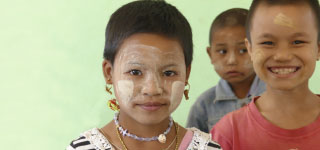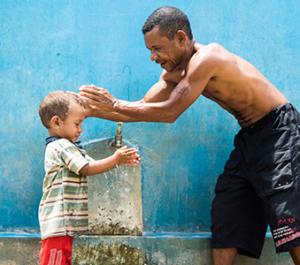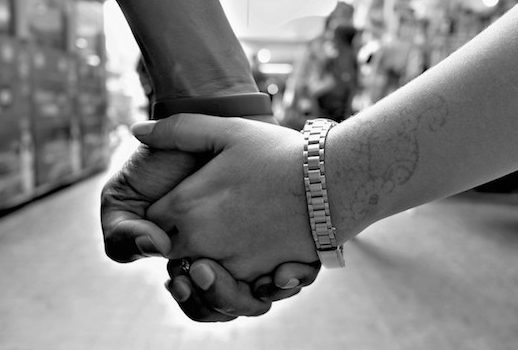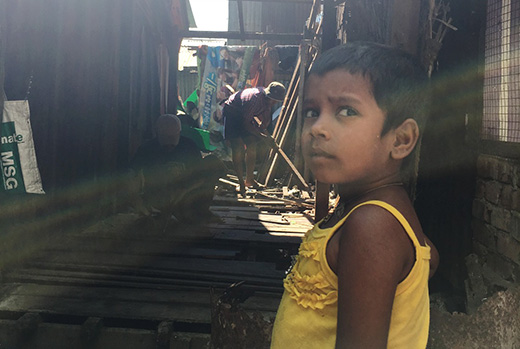A story of shared love and hope
Fr Jinhyuk SJ shares his experiences in Cambodia on St Ignatius Feast Day, 2018.
In 2005 I was sent to work in Cambodia. As you know, the long period of civil war left landmines all over the countryside. This tragic legacy left a total of 64,662 persons (as of 2017) died and physically challenged/ emotionally scarred. I was assigned to a vocational training center for these victims of landmines and also polio at a place called Banteay Prieb. One encounter in which I never forget is an encounter with one girl who came to ask me to dress her wound. When, sitting directly in front of me, she showed me the wound of her amputated leg, I was overwhelmed at seeing her scar so closely. Although the foot was missing, the nerve system which connected it with rest of her leg seemed to be still alive.
Then, one day, at prayer during my annual retreat, I was contemplating the scene of Jesus’ washing the disciples’ feet. In my contemplation, all of a sudden, the vivid image of a foot appeared. Then, one after another, there appeared the legs of other amputees in the center, the shabby prosthetic foot of a man who was the chief welder, and the sculpture teacher’s amputated legs. I recalled in my heart the stories of people who tried to commit suicide after having stepped on a landmine.
Then, in my prayer, I asked Jesus to wash their wounds by washing their feet one by one. But, I realised that there was no foot to be washed! I could not help bursting into tears. It was so painful and heart rending for me to realise the reality of these people. For the first time, their wounds and suffering entered deeply into my heart.
This experience changed my way of seeing and relating to the reality before me in the center. Having gazed on the wounds that they showed me, I came to realize three things clearly.
First, I saw how wounds can become a channel of light and hope while losing their power of death. (This power of death prevents us from living as who we are). In general, those who come for training at the center are very vulnerable, wounded in body and soul. There were people who never gone outside their homes before coming to the center due, not only to difficulty of mobility but also to the social stigma attached to being disabled. (Cambodians tend to believe that those who became the disabled have bad Karma. Therefore, in general, their disability tended to be perceived as more personal problem rather than socio-political problem. This kind of mindset can marginalize the disabled and make the disabled the poorest of the poor in Cambodia.) Many suffered from low self-esteem, despair, and sense of loss. When they came to stay for one or two years in the center, they encountered there a community of people with similar stories. The common sense of vulnerability provided a safe environment. They did not need to hide their wounded bodies and souls. They were able to be there as they were. It was really consoling to see the shining face of people who had begun to accept themselves. Composed as it was of the vulnerable, despite the occasional conflict and difficulty, the community was filled with a spirit of healing. Many people regained a hope in which was long dormant in them. They found an inner fountain of life through sharing their joys, sorrows, hopes, challenges, and difficulties. In and through their life in community they were able to celebrate being alive and to recognize and accept their dignity as human persons. One episode in particular showed how they drew strength together.
Inspired by the FIFA World Cup 2006, one day, we played a soccer game. During the game, one man kicked the prosthetic leg of another student instead of the ball. The person who did the kicking felt pain because the leg was so hard. But the kicked one felt no pain since his leg was an artificial. This incident made everyone present laugh and laugh. Every time they bumped each other, similar incidents happened—incidents only possible games played by those who have artificial legs or are compelled to limp. Their weaknesses and limitations were not the cause of feeling let down. Such moments made them a source rather of joy. Like a ray of light, joy came when we celebrated our weaknesses and we laughed a lot, accepting together our mistakes with great humor. For me, this joy was like a taste of heaven and an experience of the kingdom of God, which united us as one.
“In this way, I saw how the divine Spirit can transform our wounds into the channel of light and hope in a community that makes room for weakness and vulnerability. In this inclusive community, hope becomes contagious by encountering those who radiate hope in and despite their suffering.”
Second, the wounds of these people invited me to confront my fears and my anxiety about self-worth, which I was tempted to suppress rather than accept. Their sense of loss, their struggles to accept themselves, and their bursts of despair touched the equivalent in me. While they were being healed and experienced their precious dignity, I sensed deeply that I was privileged to be their partners and companions on a healing journey. Seeing and listening to their wounds, weaknesses, and hopes for the new life, I saw myself in them. They showed me the truth of who I am through their becoming who they are.
Third, usually, wounds become our center of attention. I learned that if I gazed only on my own wounds, I could be trapped by the power of death. However, gazing upon wounds of others can help me to connect with the wounds of Christ, our risen Lord, over whom death no longer has power. So I learned that Christian mission should begin by fixing its gaze upon the wounds of Christ in order to be in partnership with his healing mission for the transformation of a broken world. In due course, I realized that the wounded, vulnerable, and poor people are very powerful to the extent that they have power to transform me into more authentic person. They led me to encounter with Jesus through their presence. They have helped me to grow in compassion, hope, self-understanding and freedom for service. Christ sets people free. Working through the wounded people in the center, Christ helped me to join in the journey of liberation! Through allowing the wounded Christ to wash my feet, I have learned that God opens my eyes to see Christ in others more clearly.
After the ordination, I was sent to back to Cambodia Mission. I worked in the rural parish communities of Kampong Thom Province, which belongs to the prefecture of Battambang. Under the leadership of Msgr, Kike Figaredo SJ, we have been trying to live ‘our vocation to be an instrument of God for the liberation and promotion of the poor, and for enabling them to be fully a part of society’.[i] In his encyclical letter of The Joy of the Gospel, Pope Francis explains the meaning of Jesus’ word, “You yourselves give them something to eat!” (Mark 6:7) ‘It means working to eliminate the structural cause of poverty and to promote the integral development of the poor and doing ‘small daily acts of solidarity in meeting their real needs’.[ii] Education is one of the most effective ways to respond to Jesus’ invitation. That is why we have participated, directly and indirectly, in the education of local children and youth.
The parishes run hostels for boy and girl students, and three kindergartens. In order to share a healthy food with them, we cultivated rice together in organic ways. One day, I went to see the rice field in its golden color whether it was ready for harvesting. Suddenly I felt curious about how many grains one seed of rice can bear. So I began to count the number of grain. I was surprised to find that only from one of stems, there were more than 100 grains. For the first time I realized the enormous potential of one tiny seed. While I was astonished and struck by the potential of one seed, a face of one student flashed into my mind. (His father was unemployed and had to sell his land due to false accusation by the authority. Due to over-fishing and dam-projects in the upper Mekong river area and climate change, a small fisherman like his father could not promise him further education.) Affected by this family circumstance, this student was depressed about his future. In order to forget this reality, he did something inappropriate. So I was absorbed in some problems of this student at that time.
Later on, I realized that I had become blind to the great potential of this student since I narrowed down my focus to rest only on some of his weaknesses. The little seed enabled me to realize the importance of how I see. I thought myself, ‘Now, my eyes can recognize the amazing capacity of a little seed. How about recognizing the potential of the person with whom I live?’ It was another turning point for me. The tiny rice seed awakened me to find a way of becoming a person who lives in hope. I learned that to live in hope is to live with eyes that recognize the potential of a person including oneself. In other words, it is to see oneself and others in the eyes of Jesus who nurtures our potential rather than weaknesses and failures. This helped me to have a more helpful dialogue with the student, empowering both him and me as a result. In that sense, I believe that education is a way of empowering all of us to reach full potential in life.
In order for the seed to grow and bear fruits, there are so many factors involved. Most of all, continuous attention and caring! There is a saying that rice grows by hearing the footsteps of a farmer. As it is with this saying, to live in hope is to allow the seed to be provided with soil, wind, sunshine, water, fertilizer, and micro-organisms, and to be nurtured. It is to be patient and humble. It is to remind of us that we are under loving care of a great farmer, our God. Humble seeds are light. They can be scattered easily.
I believe that each of us here is a seed of hope and a seed of the Kingdom of God. We are carriers of this seed of hope. We grow together when we hear the footstep of the real farmer, our God. When we continue to embrace each other in the way we see the potential of a tiny seed, we know that we can give ourselves to nurture communities of solidarity, compassion, and sharing, which can fulfill our most genuine need of being connected.
Today I witness the vivid expressions of faith, hope, and love that come from your desire to respond to ‘our call to be an instruments of God for the liberation and promotion of the poor, and for enabling them to be fully a part of society’.
Let us imagine the joy of Christ, his joy at your reflecting his light by recalling the miracle of multiplication of loaves and fishes through your offerings. You may want to hear how your spirit of generosity and actions of solidarity bear fruit in persons whom you may never met in person.
I would like to dare to say that I am the one of the persons who has been nurtured by your shared love and hope. Also I came here with all those whom you chose to become your friends. I am really grateful for your sincere solidarity of hope and friendship. Som Or Kun! (Thank you in Khmer).
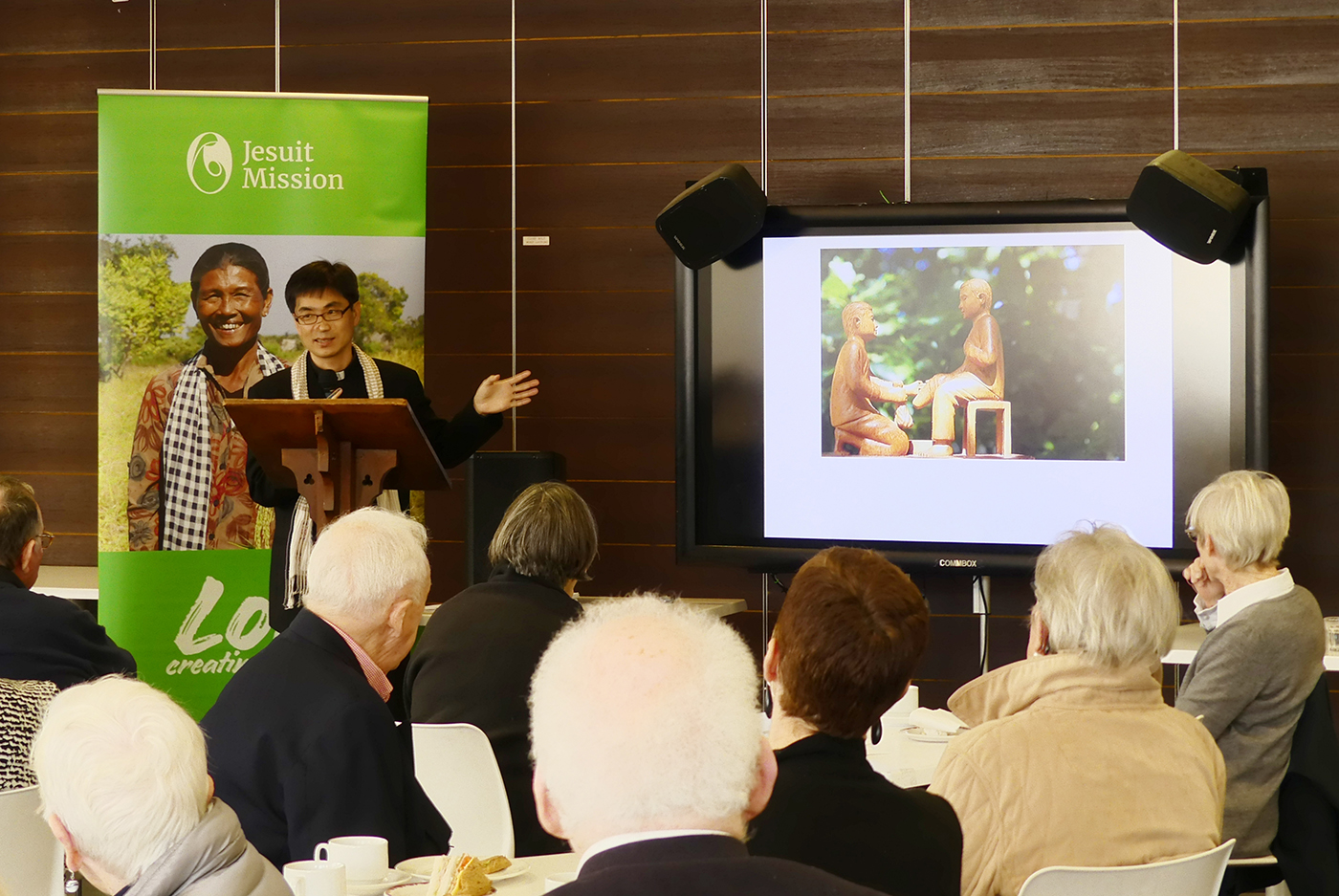
Fr Jinhyuk SJ presents these words to a gathering on St Ignatius Feast Day, 2018.
If you’d like to read more about Jesuit Mission's work in Cambodia click here

